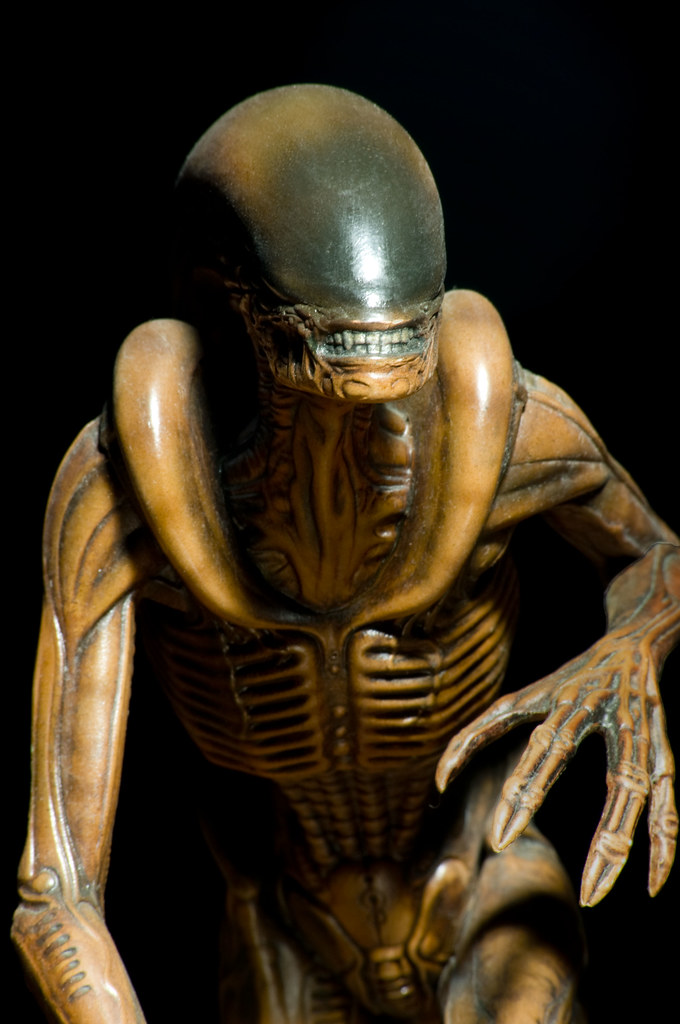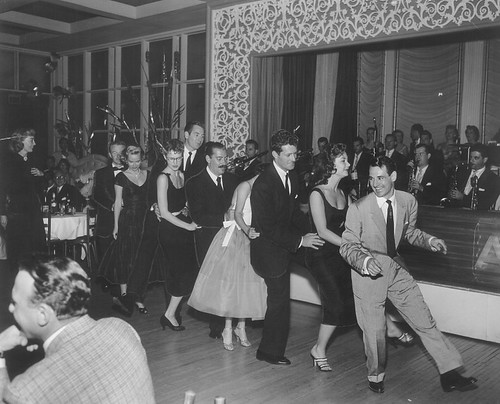
The “Alien” franchise is many things: A feminist battle cry, an existentialist nightmare, and a multi-layered dive into the endgame of a capitalist dystopia. Even the first film, despite being the most contained of the bunch, signals a far-reaching movie universe waiting to be explored, hinting at depths only hinted at in the theatrical releases. For fans ready to dive below the surface and become completely immersed in the story’s canonical nuances, a treasure trove of interesting material can be found hidden within the deleted scenes of each film.
Ridley Scott’s original cut of “Alien” clocked in at over three hours, a substantial epic that was eventually whittled down to just under two hours for its theatrical debut. This meant a sizable chunk of footage was left on the cutting room floor, and that’s just for the first installment. Of course, not every deleted scene is essential to the story – a moment featuring Kane casually making his space breakfast, for instance, adds little to the overarching narrative.
However, there are a handful of scenes that truly add crucial information about the “Alien” universe, in some cases even changing its canon and profoundly altering our understanding of characters, creatures, and corporate machinations. These aren’t just minor trims; they are pivotal moments that, had they remained, would have fundamentally reshaped the trajectory and legacy of one of science fiction’s most revered sagas. Let’s delve into these game-changing omissions and uncover the deeper universe they hinted at.
1. **Kane’s Condition and Ash’s Complicity**Poor Kane. As the first victim of the facehugger in “Alien,” he becomes the unintentional test subject as the crew attempts to understand the apex predator they have unwittingly awakened aboard the Derelict – or so we are led to believe in the theatrical cut. The later revelation that Ash, the science officer, is an android sleeper agent working for the nefarious Weyland-Yutani, casts the entire affair in a disturbingly new light, revealing a chilling corporate agenda from the very beginning.
Nowhere is this better demonstrated than in the deleted scene titled “Kane’s Condition.” This pivotal moment features an eerily passive Ash doing remarkably little to aid the poor victim, even as the concerned crew desperately tries to get an update on his deteriorating state. Navigator Joan Lambert is the first to arrive, finding the facehugger still firmly attached to a motionless Kane’s face, and is met with Ash’s bland remark that they shouldn’t try to remove it again, all while he blithely stares at the med bay monitor.
As more crewmates join, including the sharp-as-ever Ellen Ripley, she immediately hones in on Kane’s medical imaging. “What’s that stain on his lungs?” she inquires, to which Ash simply replies he doesn’t know, dismissing it as something blocking the scanner. This seemingly innocuous exchange takes on a sinister hue when viewed with hindsight, not only because we later learn the “stain” is actually an embryo, but because Ash’s blasé attitude makes it chillingly apparent that he already knows.
This scene fundamentally alters our perception of the initial encounter. It transforms the crew’s struggle from a desperate fight against an unknown horror into a horrifying corporate experiment, with one of their own deliberately facilitating the alien’s implantation. Ash’s complicity, so overtly displayed here, would have underscored Weyland-Yutani’s ruthless pursuit of the Xenomorph from the film’s outset, making the company an immediate and tangible villain rather than a later reveal.
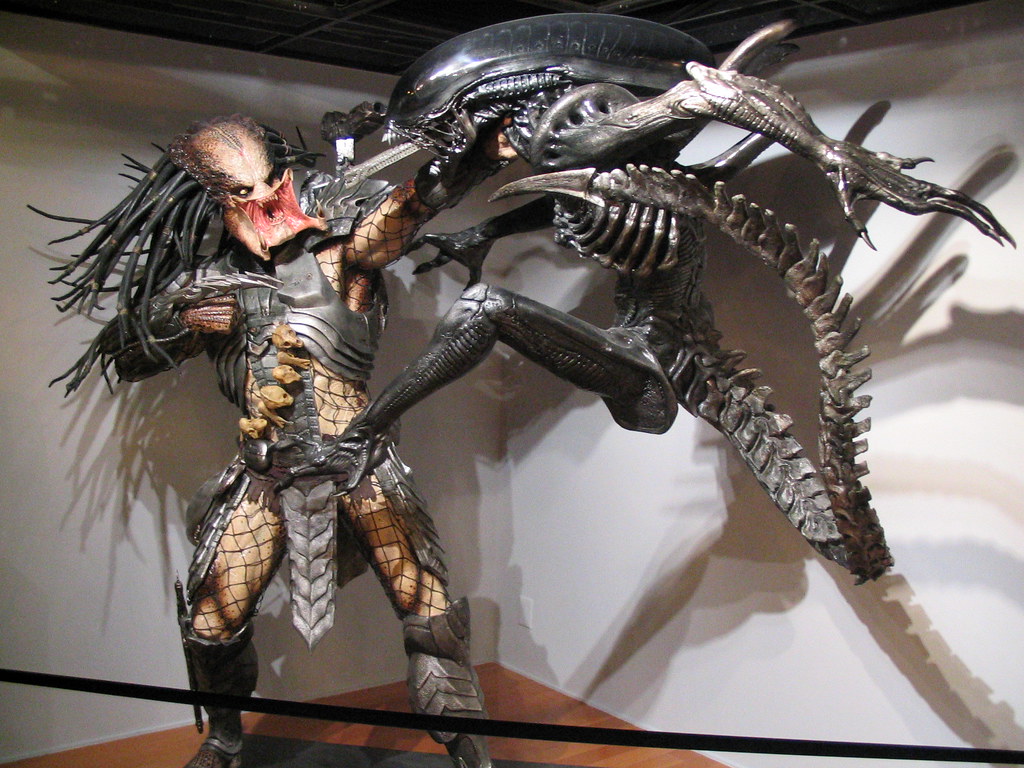
2. **The Eggmorphing Scene**Among the many confusing elements of the “Alien” franchise, the “eggmorphing” scene definitely stands out. It’s a sequence that, had it been kept, would have significantly complicated Xenomorph biology from the very first film, offering a starkly different vision of alien reproduction than what ultimately became canonical. The more fans delve into its implications, the more complex the creature’s life cycle seems to become.
Cut for length, this scene plunges Ripley into a Gigeresque cavern, her flamethrower providing the only illumination. As her gaze sweeps across the terrifying landscape, she discovers her captain, Arthur Dallas, horrifically embedded in a wall cocoon. Weakened and suffering, he begs for the mercy of death. Nearby, engineering technician Brett is also visible, almost completely absorbed within a more developed cocoon, undergoing a grotesque transformation.
Realizing the futility of saving them from their agonizing fate, Ripley torches both cocoons before making her escape, leaving behind a horrifying glimpse into an alternative Xenomorph reproductive cycle. This concept, where a host is transformed into an egg rather than simply being killed by a chestburster, was a fascinating and deeply unsettling piece of creature lore.
However, when the Xenomorph queen was later introduced in “Aliens,” it effectively changed the franchise’s take on alien reproduction, prompting considerable discussion among fans. “Aliens” director James Cameron later addressed these criticisms, explaining in a 1987 Starlog magazine essay that “‘Alien’ screenwriter Dan O’Bannon’s proposed life cycle, as completed in the deleted scene, would have been too restricting for me as a storyteller.” Cameron envisioned a more expansive, ant-like reproductive cycle, with drones and warriors secreting resinous material to create dormant niches. The removal of this scene streamlined the narrative for “Aliens” but sacrificed a truly unique and disturbing aspect of the original film’s mythology.

3. **Brett’s Gruesome Original Death**Ridley Scott reportedly changed his mind several times regarding the depiction of Brett’s death scene, a moment that in the theatrical cut leaves much to the imagination, intensifying the suspense through suggestion rather than explicit gore. However, its original iterations were slated to be far more graphic, offering a viscerally different experience for audiences.
One early concept saw the alien brutally removing Brett’s heart. Scott revealed to Fantastic Films, via Scified, that when “the others find him and turn him over, there’s a huge cavity in his chest, reminiscent of the hole in the Space Jockey.” This version was ultimately deemed too similar to Kane’s explosive death, prompting a creative shift to maintain distinct forms of alien brutality.
In the shooting script, Brett’s demise was written with stark, brutal efficiency: “THE ALIEN. Now seven feet tall. It leaps down and grabs Brett. He shrieks as it presses him close. Snaps his spine. Killing him as he screams.” The script further intensified the horror by describing a horrified Ripley and Parker watching as the alien “bounds down a companionway. Moves out of sight carrying Brett’s still-writhing body,” an image that would have profoundly underscored the creature’s raw power and predatory nature.
Yet, on the day of filming, Scott decided to alter the scene once more. Special effects supervisor Nick Allder recounted in Cinefex how Scott wanted the creature to “reach out and sort of caress his head — almost kind of inquisitive at first. Then you see it squeeze up, and blood starts running down Brett’s face, and it cracks his head open.” This version was indeed shot but ultimately remained unused. Any of these more graphic depictions would have amplified the alien’s menace and the film’s horror quotient, making Brett’s death a far more shocking and explicitly violent spectacle.

4. **Derelict’s Grand Scale**It is truly impossible to overstate the monumental impact of artist H.R. Giger’s work on the “Alien” franchise, an influence that stretches far beyond the terrifying form of the titular Xenomorph. Giger’s haunting, surrealist renderings of the crashed Engineer Juggernaut, famously known as the Derelict, are integral to the magic that elevates “Alien” from a mere blockbuster sci-fi horror into a profound work of art, a truly unique biomechanical nightmare.
For anyone with more than a casual investment in this cinematic world, exploring the deleted scenes featuring the USCSS Nostromo crew inside the Derelict is a worthwhile endeavor. Much of this content was eventually released on various box sets, allowing dedicated fans to delve deeper into Giger’s vision. These clips offer glimpses into the vastness and intricate, unsettling design of the alien craft.
However, even with these additional clips, truly comprehending the broad scope of Giger’s original vision for the ship remained challenging. Recognizing this, New York-based artist Steve Nyland took the initiative to source and compile footage and content from virtually every imaginable source, meticulously crafting a near-eleven minute video. This compilation, drawing from resources like “Giger’s Alien,” “The Alien Legacy,” and “The Beast Within: The Making of Alien,” finally allows fans to appreciate just how colossal and awe-inspiring the Derelict truly is.
It is, undeniably, a real shame that the full extent of this magnificent set design couldn’t be integrated into the original film. Had these scenes been included, they would have immersed audiences even further into the oppressive, alien grandeur of the craft, deepening the sense of dread and mystery surrounding the Space Jockey and its monstrous cargo. At least today, fans can witness Giger’s full, terrifying glory.

5. **Space Jockey/Engineer Origin Exploration**The science fiction genre has given birth to numerous iconic films, and few have achieved the monumental status of Ridley Scott’s “Alien” and its sequel, James Cameron’s “Aliens.” While these films defined the genre, the legacy of the “Alien” series could have been profoundly different had certain narrative decisions been made differently, particularly concerning a key deleted scene from the original “Alien” film.
This critical deleted scene, taking place after the crew discovers the alien ship and the infamous “Space Jockey,” offers a moment that would have shed significant light on the very nature of the xenomorphs—information intentionally withheld in the final cut. It features a detailed exploration of the “Space Jockey,” now commonly referred to as the Engineer, wherein Ripley and the crew investigate the strange alien creature’s anatomy and possible origins, moving beyond mere visual awe to analytical inquiry.
Had this scene been included, it would have provided a much more substantial exposition of the xenomorph species and their creators. By elaborating on the origins of the Space Jockey and their relationship with the xenomorphs, the film would likely have altered the perception of the alien life forms. Instead of simple antagonists, they could have been seen as beings with a rich, albeit tragic, history, inciting philosophical questions about creation, existence, and the inherent nature of the xenomorphs, much like the thematic explorations seen in “Blade Runner.”
This deeper dive into the mythology would have established a fundamentally different narrative trajectory for the subsequent films, particularly Cameron’s “Aliens.” Ripley’s fear and eventual empowerment might have taken a different form if she were aware of the xenomorph’s created nature, shifting her struggle to include moral implications. Thematic depth would also have expanded, weaving in ideas of ‘parenting’ from both human and xenomorph perspectives, and portraying xenomorphs as tragic figures reminiscent of Frankenstein’s creature. This “critical omission” undeniably altered the franchise’s legacy.
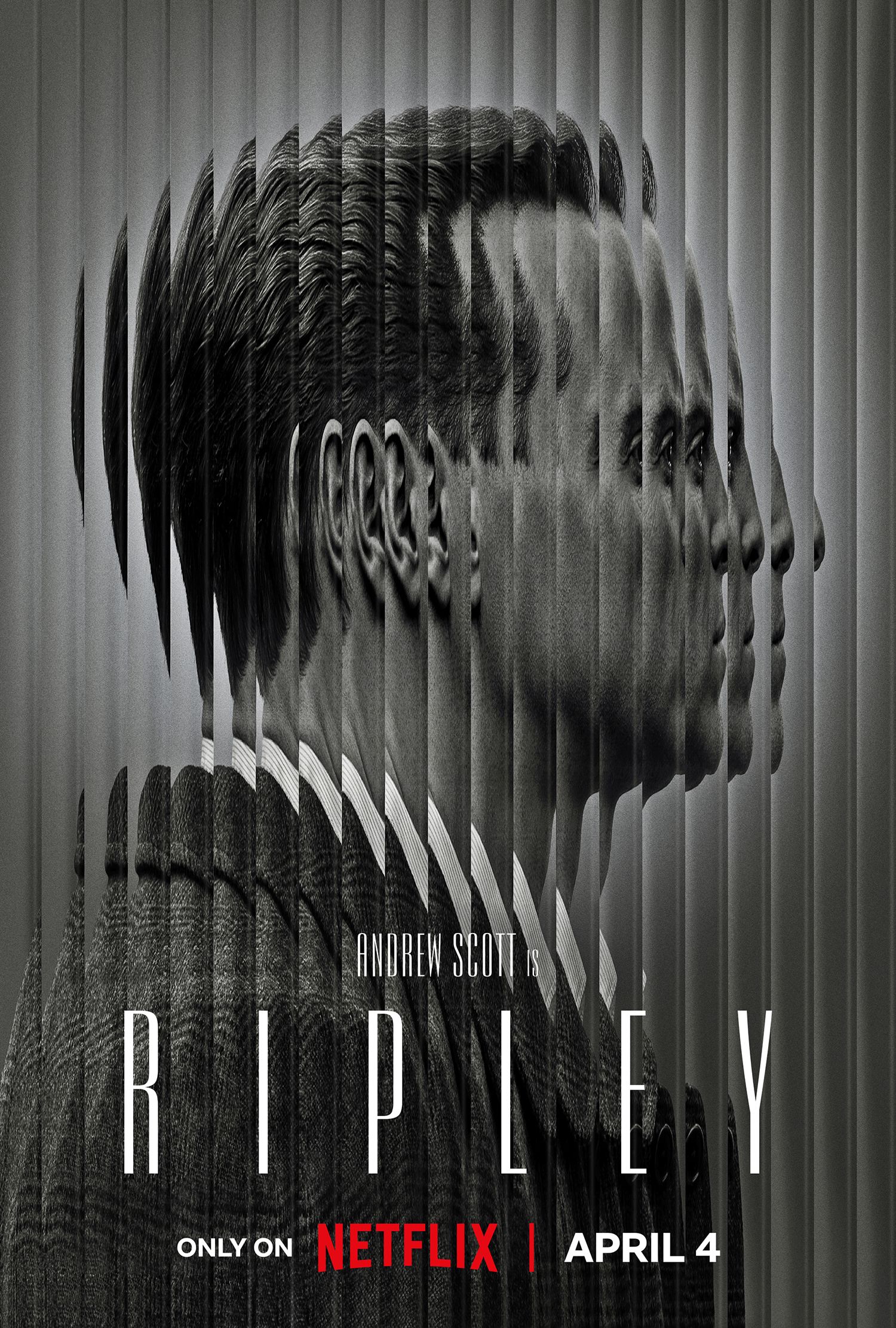
6. **Ripley’s Maternal Grief and Connection to Newt**James Cameron’s 1991 re-release, “Aliens: Special Edition,” begins with a direct statement from the director himself, informing viewers that what they’re about to see is “the ride that we intended you to take”—a “longer, more intense, and more suspenseful version of the film.” This extended cut is not merely about added suspense, but crucially, about extra character development and world-building, particularly for Ellen Ripley, shaping her profound connection to the orphaned Newt.
Among these vital additions is a scene that lends significant insight into Ripley’s relationship with Newt, the sole survivor of the Hadley’s Hope terraforming colony. Fresh out of 57 years in hypersleep and confined to the medical facility on Gateway Station, Ripley anxiously awaits Weyland-Yutani junior executive Carter Burke. He arrives primarily to discuss her upcoming hearing, but Ripley’s sole focus is news about her daughter, Amanda, who was a child when Ripley last saw her.
The devastating news arrives: her daughter passed away two years prior at the age of 66. Burke, with a certain coldness, shows Ripley a photo of Amanda (actually Sigourney Weaver’s mother, actor Elizabeth Inglis), revealing that her daughter had no children of her own. This profoundly “sad, dark, and lonely” revelation creates a “perfect crisis to prime Ripley for clinging to Newt despite almost insurmountable challenges,” providing a raw, personal wound that fuels her fierce protectiveness.
Further solidifying this bond is another powerful deleted scene where Ripley talks to Newt about her deceased daughter. As Ripley lays Newt down to sleep, they discuss the gruesome alien birth they witnessed. Newt, with innocent but heartbreaking logic, asks, “Isn’t that how babies come? I mean, people babies? They grow inside you?” Ripley gently corrects her, confirming, “Yes, I did. I had a little girl.” When Newt asks, “Where is she?” Ripley’s choked response, “She’s gone,” leads to Newt’s grim but accurate conclusion: “You mean dead.” These combined scenes provide the profound emotional context that elevates Ripley’s maternal bond with Newt from a powerful dynamic to an almost spiritual quest for closure and redemption.
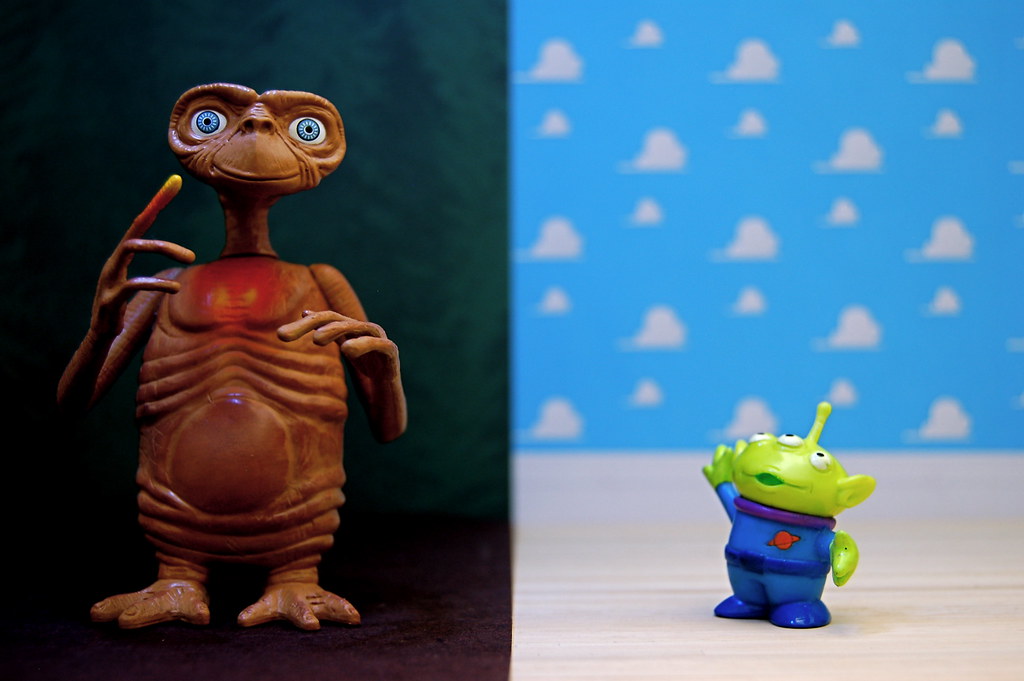
7. **Hadley’s Hope Colony Life**Anyone who watched “Aliens” in its original theatrical release and never caught the DVD version with deleted scenes truly missed out on a fascinating and critical look at life in the Weyland-Yutani terraforming colony Hadley’s Hope, which boasted a population of 158. In what is objectively one of the coolest deleted scenes in the entire “Alien” franchise, we are given a brief but vivid glimpse into the inhabitants going about their daily routines before the horror descends.
The scene opens with an exterior pan of Hadley’s Hope, revealing an industrial complex starkly situated on the arid, desolate moon of Acheron, formerly designated LV-426. Here, the corporation’s terraforming efforts are clearly still in their atmospheric phase, a harsh environment where a rover enters the complex through a huge gate, providing a temporary escape from the whipping winds of the moon’s surface.
Inside the complex, the atmosphere strangely resembles a 20th-century workplace, offering a mundane contrast to the futuristic setting. Hard hat-wearing workers diligently go about their duties, while their coffee-swigging bosses walk and talk through busy corridors, dropping exposition. The camera follows administrator Al Simpson and his assistant Brad Lydecker as they navigate this bustling environment, their conversation interrupted by a gaggle of kids playing where they shouldn’t be, adding a touch of everyday realism.
Their discussion revolves around Lydecker’s query about a survey team he dispatched to a specific grid point that Weyland-Yutani had specifically requested be checked out. It quickly becomes clear that this team has indeed found “something.” Tragically for the doomed colony, that “something” turns out to be the infamous Derelict. This scene provides invaluable context, revealing that the company, Weyland-Yutani, is “pretty much directly responsible” for the disaster, explicitly setting the stage for the catastrophic events that follow and making the human cost far more tangible.
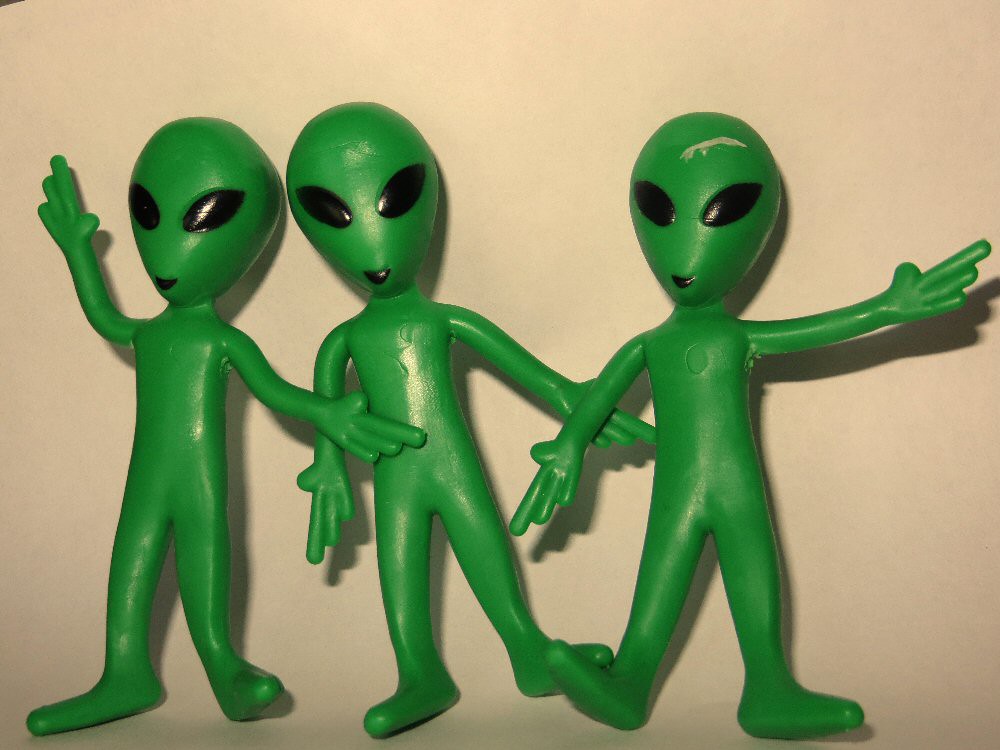
8. **Newt’s Family’s Tragic Encounter**Directly following the immersive Hadley’s Hope scene in the special edition is a harrowing look at precisely what that “mom and pop survey team” was headed over to investigate. This sequence finally shows the chilling origin of Newt’s profound trauma and fear, providing the context for her intense hatred of the Xenomorphs that the theatrical cut only hints at. Inside a bumpy moon rover traversing the desolate landscape, we are introduced to a family of four, including a familiar face: Newt Jordan herself.
Here, Newt is just a normal kid, looking significantly better than her initial appearance in the film’s theatrical cut. She’s in the back seat, engaging in a typical sibling argument with her brother Timmy, played by her actual brother Christopher Henn, about going into the air ducts at the complex. This brief glimpse of normalcy heightens the tragedy of what’s to come, making their impending doom all the more impactful.
The rover eventually arrives at the instantly recognizable Derelict, the very same ship where John Hurt’s Kane was facehugged in the first film. Before calling in their discovery, Newt’s parents instruct the children to wait in the car while they climb into a crack to get a peek at what they believe to be a “big score.” Their excitement, coupled with the audience’s knowledge of the ship’s deadly contents, creates an unbearable tension.
Hours later, Timmy attempts to reassure Newt that everything is okay, believing their dad knows what he’s doing. Just then, their mom appears, grabbing the scanner to frantically call for help. Terror sets in as Newt screams upon spying her father on the ground outside the rover, a facehugger horrifyingly attached to him. This entire extended sequence was tragically removed for time, as James Cameron was instructed to cut about 20 minutes from the film. However, as Carrie Henn noted on the DVD audio commentary, the scene’s importance in “helping establish the depth of her hatred for the Xenomorphs” cannot be overstated, providing a visceral, personal foundation for her character’s deep-seated trauma.
Following the foundational shifts presented in the original ‘Alien’ and the early developments of ‘Aliens,’ our deep dive into the franchise’s lost potential continues. This next collection of deleted scenes truly showcases how much more expansive, visceral, and emotionally resonant the saga could have been. From alternative character fates to groundbreaking horror elements and profound lore expansions, these omissions would have redefined the trajectory of the ‘Alien’ universe, affecting character arcs, thematic depth, and even our understanding of the Engineers and the Xenomorphs themselves.

9. **Burke’s Cocoon Scene**Few moments in the entire ‘Alien’ saga would have been as viscerally satisfying as witnessing the corporate stooge Carter Burke finally receive his long-overdue comeuppance. His manipulative schemes against Ripley and the crew of the USS Sulaco made him a prime candidate for a truly horrific end, yet the theatrical cut of ‘Aliens’ leaves his ultimate fate frustratingly ambiguous, cutting away before we see if he’s merely killed or, more chillingly, taken to be cocooned.
However, a profoundly impactful deleted scene, as recounted by Carrie Henn on the Special Edition DVD commentary, reveals a fate far more fitting for Burke. This sequence plunges Ripley into a Xenomorph-covered stairwell and a narrow, biomatter-choked corridor. Dropping a flare to illuminate the suffocating darkness, she creeps into a tight space, only to be grabbed by a horrifyingly cocooned Burke, writhing in agony and pleading for help.
His desperate cries, “Oh God! It’s inside — God, God!” would have resonated deeply, confirming the worst for the calculating executive. Ripley, faced with the man who orchestrated so much pain, demonstrates a dark compassion. She hands him a grenade, an act of mercy to end his suffering and prevent his grotesque transformation into an egg. Seconds later, as she emerges from the passage, the explosive boom behind her seals his fate.
This scene isn’t just about a villain getting his just deserts; it’s a profound window into Ripley’s integrity and a testament to her heroic, albeit hardened, nature. Even for someone who betrayed her, she was willing to help end his torment. Its inclusion would have brought a definitive, grim closure to Burke’s arc, underscoring the relentless horror of the Xenomorphs and adding another layer to Ripley’s complex character development.

10. **Extreme Horror in Alien 3 (Dogburster and Newt’s Autopsy)**David Fincher’s ‘Alien 3’ already stands as a bleak and unsettling entry in the franchise, placing a vulnerable Ripley within an all-male penal colony. Yet, reports from those involved in the sequel suggest that its original vision for body horror was even more extreme, pushing the boundaries of what audiences might consider watchable and truly delving into the gruesome consequences of the Xenomorph’s biology.
One of the most infamous examples is the so-called “dogburster” scene, centered around the prison Rottweiler, Spike. This sequence, directly depicting the agonizing birth of a Xenomorph from the dog, shows Spike violently shaking before the creature’s uber-grisly emergence. While shocking, this scene only scratches the surface of the intense horror originally planned for the film.
According to makeup artist Greg Cannom, an even more disturbing scene was filmed: a detailed autopsy performed on the child Newt. In the theatrical cut, Ripley requests the autopsy to confirm Newt isn’t carrying an embryo, a difficult scene to watch. However, the filmed version was far more explicit, showing much more of the process, to such an extent that it caused viewers to abandon test screenings in protest.
Cannom vividly recalled the experience in the 2003 documentary “Wreckage and Rage: Making Alien 3,” stating, “I like certain gore in films, I do it, and it made me sick. It really grossed me out and I remember that people got up and left, walked out of the theater at the time. And I was just thinking, this’ll never be in the film. They can’t show this stuff. It was just too much.” This excised footage unequivocally proves Fincher’s initial intent to deliver an unprecedented level of visceral horror, fundamentally altering the film’s reputation had it remained.

11. **Alien Resurrection’s Alternate Earth Landings**’Alien Resurrection,’ set two centuries after the events of ‘Alien 3,’ saw a cloned version of Ripley return to the screen, with Joss Whedon penning the script. Whedon harbored a strong desire to finally bring Ripley back to Earth for the film’s climax, a monumental narrative step that had never been taken in any previous ‘Alien’ movie, promising a radical departure for the franchise’s setting.
Whedon envisioned several alternate endings for this Earthbound conclusion. His initial concept involved Ripley, the horrific Newborn alien, the synthetic Annalee Call, and two others crash-landing in a forest. The Newborn was then taken out by what was essentially a futuristic combine harvester, its acid blood igniting a fire around them. When this vision was deemed unsuitable, Whedon continued to develop other scenarios.
He told In Focus, “The second one was in a futuristic junkyard. The third one was in a maternity ward. And the fourth one was in the desert.” However, these later concepts were heavily influenced by budgetary constraints, with Whedon noting, “Now at this point this had become about money, and I said, ‘You know, the desert looks like Mars. That’s not Earth; that’s not going to give people that juice.'” Despite his reservations, he still crafted the best desert ending he could under the circumstances.
Ultimately, the studio decided against any Earth landing for the theatrical release. Nevertheless, one unused ending was actually filmed, offering a tantalizing glimpse of what could have been: Ripley and Call landing in a post-apocalyptic Paris, with the iconic Eiffel Tower half-collapsed. This visually striking finale would have revealed a bleak and scarred future for Earth, profoundly altering the franchise’s scope and delivering a truly fresh, if dystopian, setting.
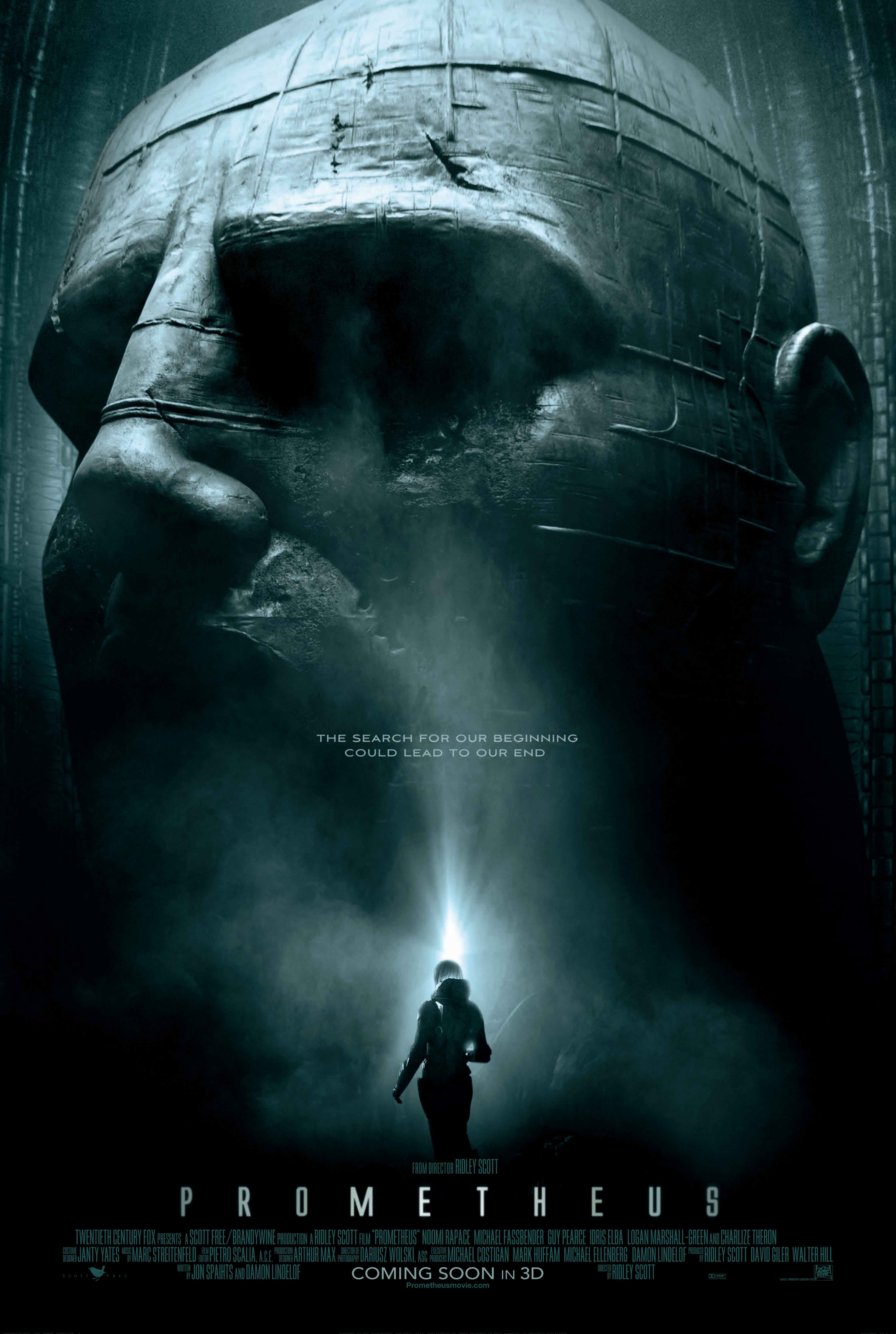
12. **Prometheus’s Extended Engineer Revelation**Just when fans believed they had finally grasped the intricacies of Xenomorph mythology, the ‘Alien’ franchise unleashed a new layer of complexity with the introduction of the Engineers in ‘Prometheus.’ This ancient, godlike alien race was revealed to be the creators of humanity, only to later attempt our eradication for reasons that remained frustratingly unclear in the theatrical cut, sparking numerous fan theories—including the provocative idea that Jesus was an Engineer and humanity was punished for his crucifixion.
The Engineers are the driving force behind the archaeological findings that propel Elizabeth Shaw and Charlie Holloway’s expedition to LV-223. Given their pivotal role, it’s a significant missed opportunity that crucial dialogue between the crew and the Last Engineer was trimmed from the film’s theatrical release, leaving audiences with more questions than answers regarding their motivations and the overarching narrative.
In the theatrical version, after being revived from stasis by the synthetic David, the Last Engineer erupts in an angry foreign tongue, demanding to know the humans’ purpose before violently ripping off David’s head. While certainly shocking, this abrupt outburst lacked the necessary context to fully explain his rage. The expanded deleted scene, however, offers a much more extensive and illuminating conversation.
Under Peter Weyland’s direction, David conveys his boss’s desire for eternal life. Weyland then brazenly declares to the Engineer, “You and I, we are superior. We are creators. We are gods. And gods never die.” This arrogant proclamation, a direct challenge to the Engineer’s own god-like status and a reflection of humanity’s hubris, serves as the definitive trigger for the Engineer’s explosive fury. The extended scene not only clarifies the Engineer’s motivation but also contextualizes the entire plot, deepening the film’s themes of creation, mortality, and the dangerous pursuit of forbidden knowledge.
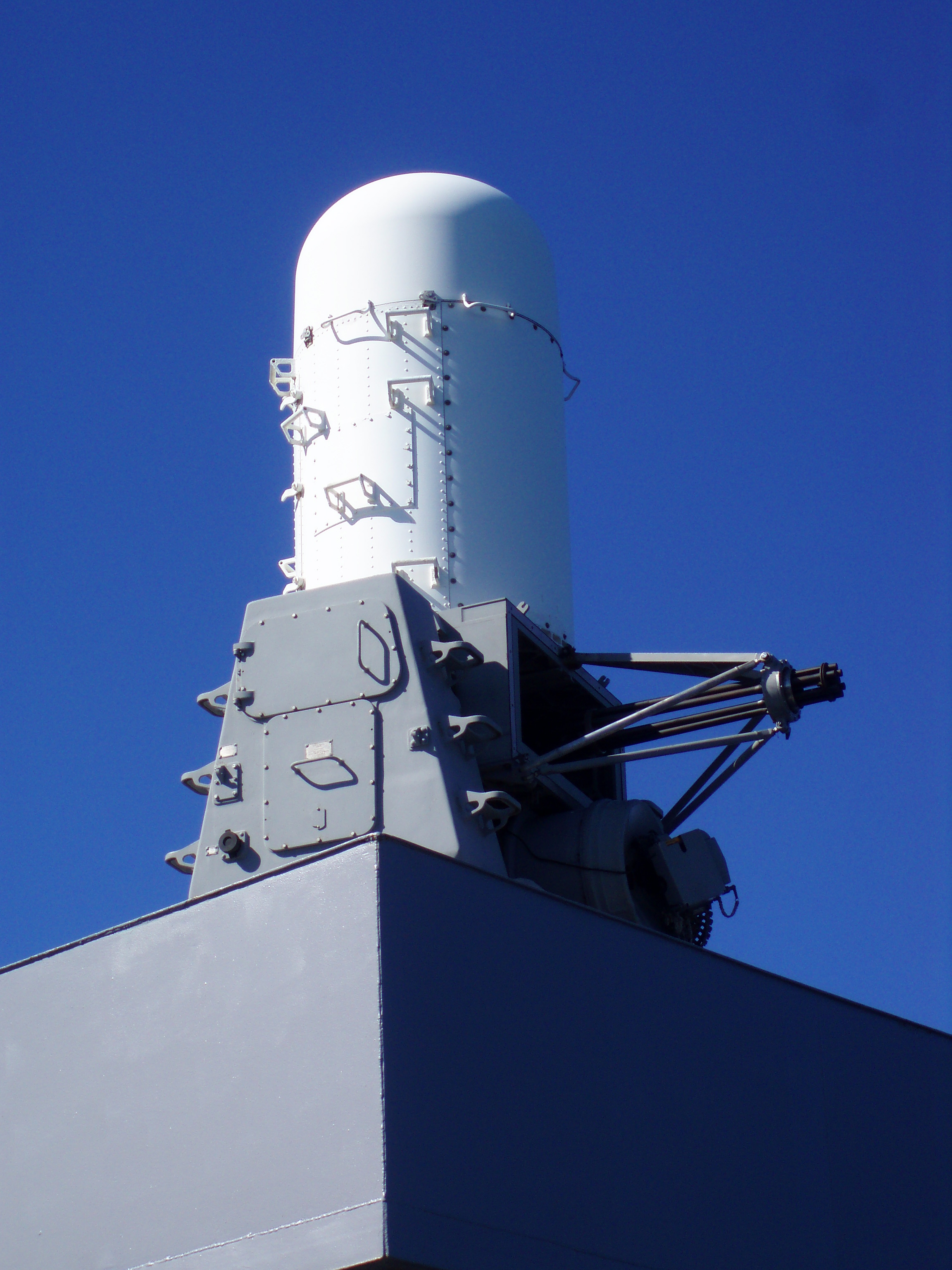
13. **The Sentry Guns**’Aliens’ is celebrated for its relentless action and intense atmosphere, expertly conveying the overwhelming odds faced by Ripley, Newt, and the Colonial Marines. While the theatrical cut is already a masterclass in tension, it’s truly remarkable that a significant and undeniably ‘flat-out great’ action sequence—the sentry guns—was ultimately excised. Its inclusion would have further solidified the desperate situation in Hadley’s Hope.
This powerful deleted scene vividly demonstrates the sheer numerical superiority of the Xenomorph horde. As Hicks, Hudson, and Ripley watch, a line of automated sentry guns opens fire, their bullet caches gradually but rapidly diminishing under the relentless assault of the creatures. The visual of the Xenomorphs skittering across corridor walls and ceilings, seemingly unfazed by the storm of bullets, paints a dire picture of humanity’s struggle.
The gradual depletion of ammunition, coupled with the sheer volume of incoming Xenomorphs, would have made the audience feel the walls literally closing in on the remaining characters with an almost suffocating intensity. It’s a masterful piece of visual storytelling, showcasing the alien’s unending numbers and the desperate futility of conventional defenses against such a threat.
Beyond its narrative impact of cementing the overwhelming odds, the scene is, quite simply, “really cool.” The sight of those sentry guns blasting away, momentarily holding back the tide, provides a momentary, thrilling reprieve from the direct, close-quarters combat. While the theatrical cut of ‘Aliens’ works exceptionally well without it, the sentries scene would have undeniably heightened the sense of impending doom and enhanced the film’s legendary action sequences.
Read more about: Unveiling the Future: Life Aboard the USS Gerald R. Ford, the World’s Largest Aircraft Carrier
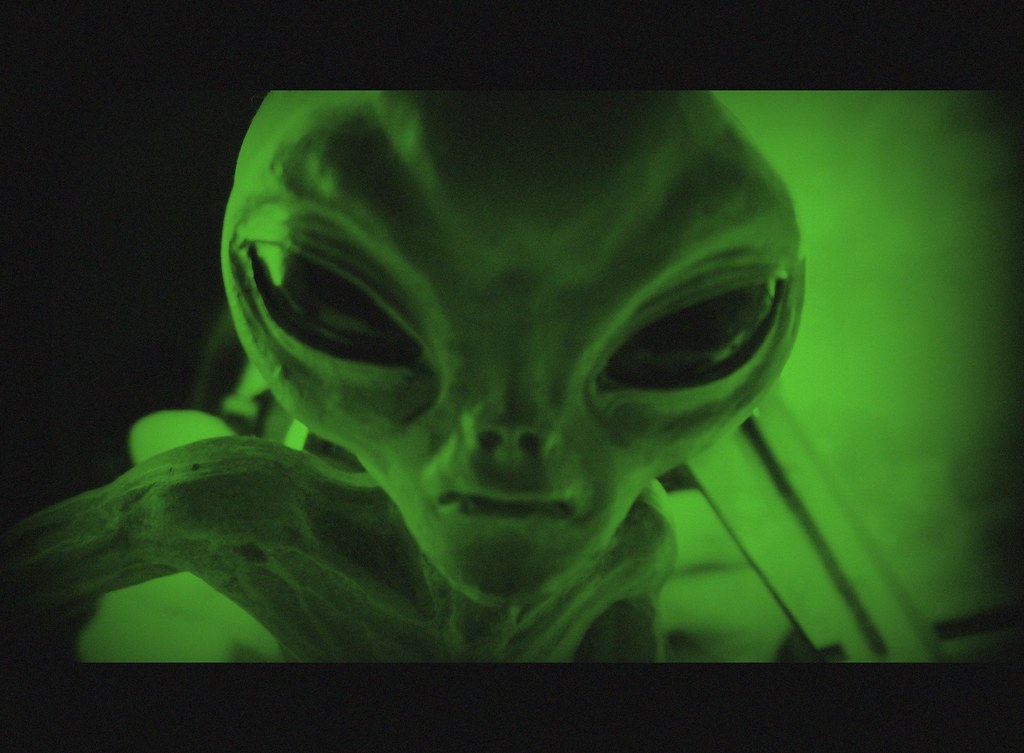
14. **Foreshadowing the Queen**The reveal of the Queen Xenomorph in ‘Aliens’ stands as one of the franchise’s most iconic moments, a monumental expansion of the creature’s mythology. In the theatrical cut, audiences discover the Queen’s existence right alongside Ellen Ripley, making her sudden, terrifying appearance all the more impactful. Yet, the Director’s Cut includes a subtle, well-executed piece of foreshadowing that enriches the narrative without diminishing the eventual reveal.
This scene provides Bill Paxton’s unforgettable character, Hudson, with a few more memorable lines—a welcome addition for any fan. Hudson speculates about the colony’s structure, comparing it to an “ant hive,” suggesting a singular intelligence at its core. Vasquez, ever direct, corrects him: “Bees, man. Bees have hives.” Hudson, however, persists, refining his analogy: “You know what I mean. There’s, like, one female that runs the whole show.”
It’s at this crucial juncture that Bishop, the seemingly benevolent synthetic, chimes in with characteristic precision: “Yes, the queen.” Hudson, taking this further, affirms, “Yes, the mama. She’s badass, man. I mean, big.” Vasquez, ever the skeptic, dismisses his musings with “These things ain’t ants, estúpido,” to which Hudson, despite his dramatic flair, simply acknowledges that he knows.
This exchange is a brilliant piece of world-building, weaving in the concept of a hierarchical Xenomorph society before its physical manifestation. It primes the audience for the eventual reveal, making it feel organic to the universe rather than a sudden, unexplained introduction. For devoted fans, it offers a deeper appreciation for the creature’s complexity and adds another layer to the already dense mythology, showcasing Cameron’s meticulous attention to detail.
Read more about: Beyond the Spotlight: Glamorous Photos and the Many Sides of Linda Ronstadt, a Music Icon
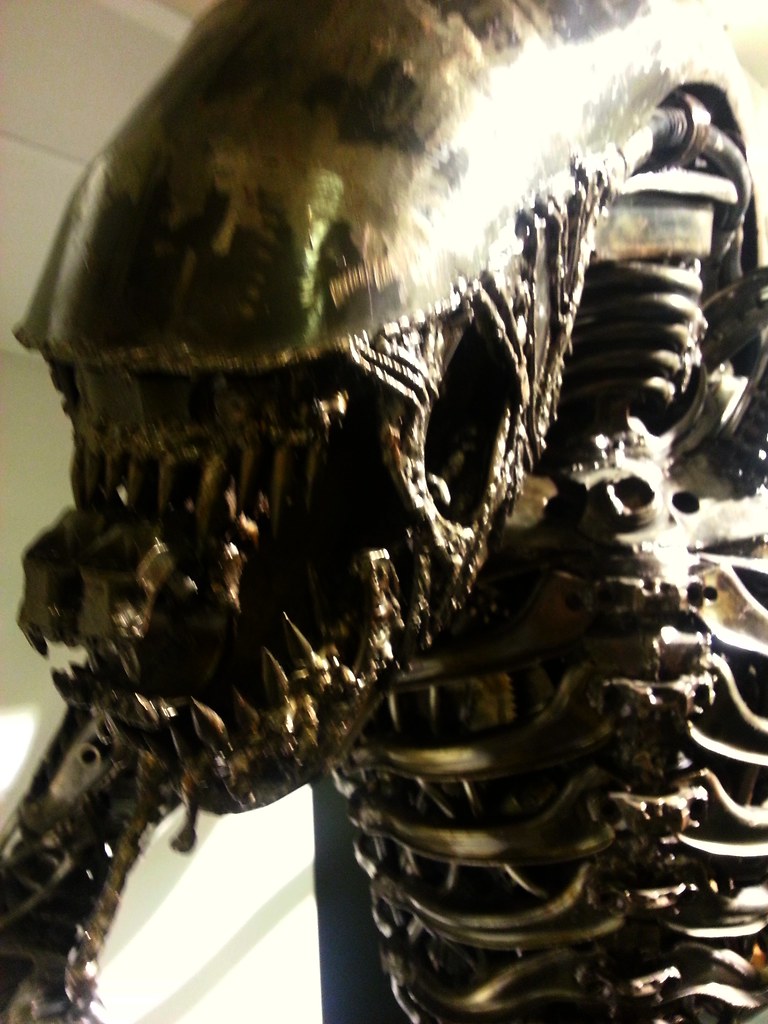
15. **Hicks’ Personal Connection with Ripley**While the fierce maternal bond between Ripley and Newt forms the emotional core of ‘Aliens,’ the evolving dynamic between Ripley and Corporal Dwayne Hicks provides a different, yet equally compelling, layer of human connection. Of all the gruff Colonial Marines, Hicks is the one who consistently gives Ripley a fair chance from the outset, and his respect for her only deepens as the mission progresses, laying the groundwork for a truly meaningful relationship.
It’s clear that Hicks emerges as a formidable romantic interest for Ripley, and many fans lamented that the tragic events at the beginning of ‘Alien 3’ abruptly cut short their potential future together. The theatrical cut hints at this growing rapport, but a tender deleted scene in the Director’s Cut, occurring just before Ripley embarks on her perilous solo mission to rescue Newt, solidifies their burgeoning personal connection.
As Ripley prepares for the dangerous undertaking, she shares a quiet moment with Hicks. She bids him farewell, addressing him by his last name, maintaining a professional distance. It is in this intimate exchange that Hicks, clearly affected, decides to drop his guard. He reveals his first name, “Dwayne,” a small but profoundly significant gesture of trust and intimacy. Ripley, recognizing the moment, reciprocates, sharing her own first name, “Ellen.”
This simple, understated interaction is a beautiful moment of shared vulnerability and developing affection. It humanizes both characters, stripping away the military formality to reveal the deeper bonds forming under extreme duress. It is a ‘nice little moment,’ one that many argue was ‘worthy of ending up in the theatrical cut,’ providing an essential emotional beat that underscores the human cost and connections forged in the face of unimaginable terror.
The “Alien” franchise, in its theatrical iterations, stands as a titan of science fiction and horror. Yet, by delving into these crucial deleted scenes, fans gain an unparalleled insight into the profound depths and alternative directions originally envisioned for this iconic universe. Each omission, from clarifying corporate malevolence to expanding alien biology, deepening character motivations, and even reshaping the very setting of future conflicts, reveals a richer, more complex narrative tapestry. These lost moments are not mere footnotes but pivotal narrative threads that would have irrevocably altered the saga’s legacy, offering tantalizing glimpses into what might have been and cementing the enduring power of storytelling in all its forms. The journey through these excised segments is a testament to the immense creativity poured into the ‘Alien’ films, proving that even what’s left on the cutting room floor can still resonate with fans and spark endless contemplation about the road not taken.

